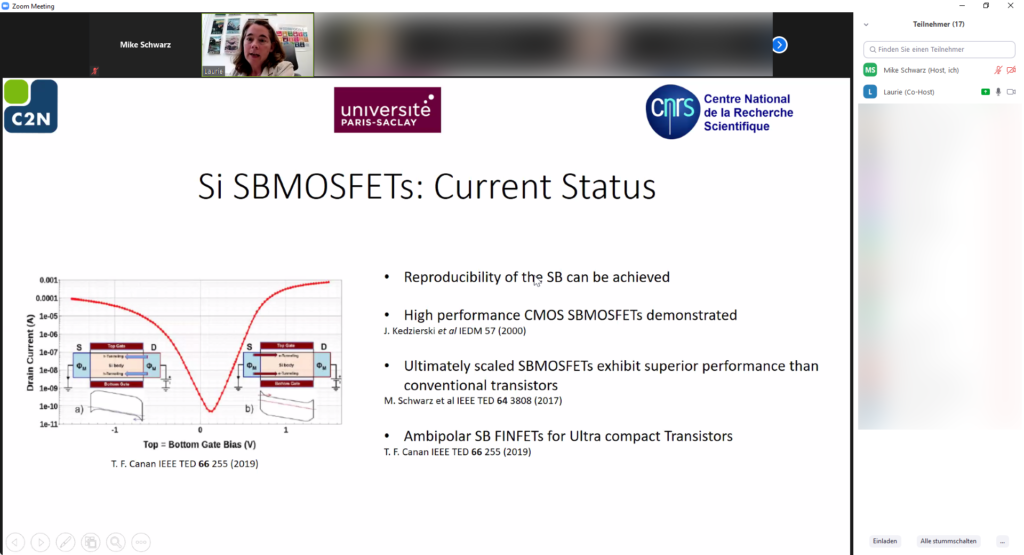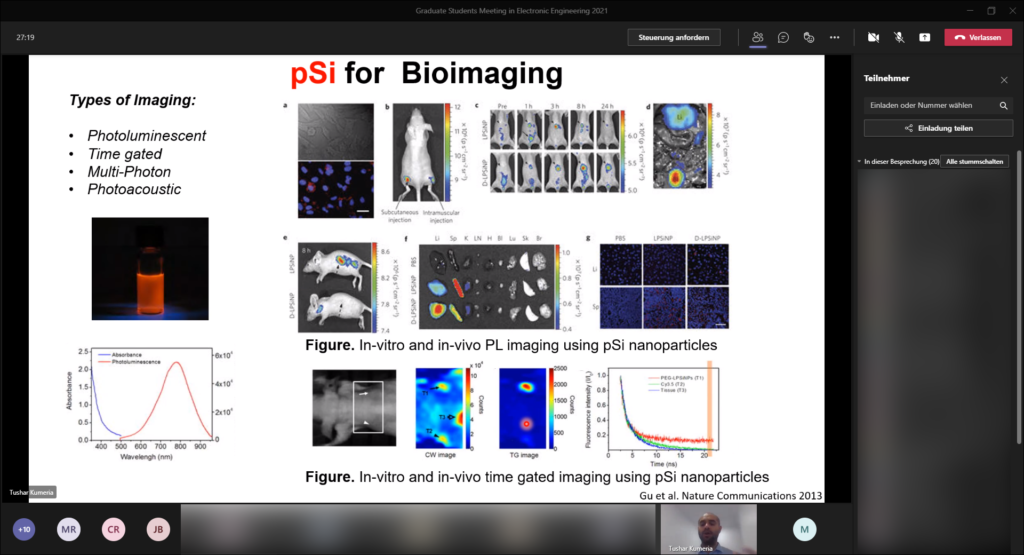Joint Graduated Students Meeting at URV and 5th Symposium on Schottky Barrier MOS (SB-MOS) devices
The Graduated Students Meeting on Electronic Engineering at the Department of Electronic, Electrical and Automatic Control Engineering of the University Rovira i Virgili and 5th Symposium on Schottky Barrier MOS (SB-MOS) devices was held from June 30 to July 2, 2021. This was the first joint R&D event between the URV and Symposium of SB-MOS. Within the timeframe also three distinguished lecture were given (see additional reports). One by Prof. Gana Nath Dash from Sambalpur University on “Tunneling Graphene FET” and one by Prof. M.K. Radhakrishnan from NanoRel, Singapore on “Revisiting a Birth which Impacted Humanity in Seven Decades”, and one by Prof. Adam Skorek from the Universitédu Québec à Trois Rivières, Canada, on “Biofields and bioelectronics on Human-Machine interfaces” All three DLs were organized in collaboration by the EDS Spanish and Germany Chapter.
This joint event was organized by the the Department of Electronic, Electrical and Automatic Control Engineering of the University Rovira i Virgili (Tarragona, Spain) and the EDS Spain and Germany Chapters (chaired by Profs. Benjamin Iñiguez and Mike Schwarz, respectively). The Graduate Students Meeting on Electronic Engineering was chaired by Professor, Josep Ferré-Borrull (URV).
Due to the still ongoing COVID-19 pandemic the event was organized virtually via the Zoom and MS Teams Platform. All presentations were given live in this virtual format. The event was sponsored by URV, THM, the EDS Spain and Germany Chapter. The event was attended by approx. 100 participants during the three days.
The event started with the distinguished lecture by Prof. Gana Nath Dash. Afterwards, the Symposium on Schottky Barrier Devices was openen with a short “celebration” of the 5th bday.
The first presentation was given by Prof. Walter Weber from Vienna University and entitled “Germanium nanosheet and nanowire transistor technologies for beyond CMOS applications”. He was referring on Al/Ge/Al Transistors with NDR functionality, Ge based Reconfigurable Nanowire Transistors and on NDR Mode Reconfigurable Transistors with a lot of discussion on various results.

The next talk was given by Prof. Radu Sporea from University of Surrey on the topic “Evolving contact-controlled thin-film transistors”. He started with some premise and introduced the multimodal transistor (MMT) with its physical background and functionality. Afterwards, he showed various potential applications e.g. analog memory, digital to analog converters, and many more.
After a coffee break the session continued by a presentation from PhD candidate Christian Römer from THM University of Applied Sciences who presented a collaborative work with namLAB Dresden “Compact Modeling of Dually-Gated Reconfigurable Field-Effect Transistors”. He was showing the evolution of a compact modeling approach for dual-gated Reconfigurable Field-Effect Transistors to a closed-form and physics-based DC compact model with the latest results of comparisons to experimental data.

The first day was closed by Dr. Laurie Calvet with a talk on “The Schottky barrier transistor in all its forms”. She offered an introduction into the basic principles and a wrap up of the history. Afterwards, the state of the art were presented and a lot of discussions followed by the Schottky barrier transistors in all its forms.
The second day continued with the Graduated Students Meeting opened by Prof. Jose Ferre Borrul from URV. The first presentation was a DL by Prof. M.K. Radhakrishnan from NanoRel, Singapore. Prof. Radhakrishnan gave an outstanding review on the last 115 years of device evolution and offered photos and documents from history many of the participants never have seen before.
After a short break Dr. Pierrick Clément from EPFL presented a talk on “Integration of nano-engineered carbon nanotube hybrids on MEMS for (bio)sensing application”. Intersing discussions on carbon nanotunes vs. grapheme sheets followed.
The last talk of the second day was given by Prof. Adam Skorek from Université Québec on “Biofields and bioelectronics in Human-Machine interfaces”. It was a very interesting presentation from a worldwide perspective of some modern research works with their results impacts, and completed by the lecturer’s experiences and guidelines for the future. Some practical examples were explained, stimulating the audience to various scientific as well R&D activities in this so promising area. Besides, Prof. Skorek made an additional presentation about the benefits of becoming Student Member of IEEE, and in particular EDS.

The third day started with an excellent talk by Prof. Tushar Kumeria from University of New South Wales, Australia on “Porous nanomaterials for biomedical applications”. He gave details and many applications on Photo acoustic properties of porous silicon particles for Bioimaging.
After the presentation a session for PhD candidates followed. The first work was presented by Sara Martínez de Cripán from URV on “Machine learning-based retention time prediction of trimethylsilyl derivatives of metabolites”. The investigations offered the limitation of the ML algorithms by the limited amount of available data.
The presentations continued with a talk entitled “Optical Platform to Analyze a Model Drug-Loading and Releasing Profile Based on Nanoporous Anodic Alumina Gradient Index Filters” by Pankaj Kapruwan from URV. The session was finalized by Xavier Genaro from URV with a presentation on “Contribution to the Development of a Multifrequency Energy Distribution System for Battery Charging in Electric Vehicles”.
After a break the final talk of the GSM was delivered by Prof. Christoph Bookmeyer from URV.
